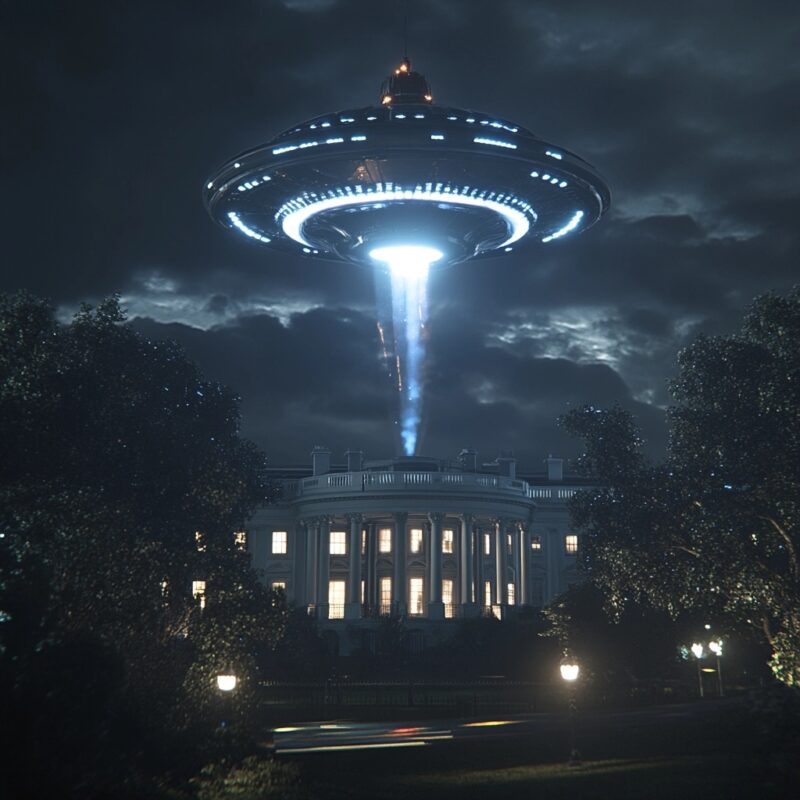Project Blue Book was the United States Air Force’s systematic study of unidentified flying objects (UFOs), conducted from March 1952 to December 17, 1969. This program, headquartered at Wright-Patterson Air Force Base in Ohio, was the last in a series of official UFO studies undertaken by the U.S. military.
The project’s origins can be traced back to the late 1940s, following a wave of UFO sightings across the United States. It was preceded by Project Sign (1947) and Project Grudge (1949), both of which were attempts to investigate and explain UFO phenomena. Project Blue Book, named after the blue booklets used for college exams, was established with two primary goals:
- To determine if UFOs posed a threat to national security
- To scientifically analyze UFO-related data
Under the leadership of Captain Edward J. Ruppelt, Project Blue Book began its operations with a more open-minded approach than its predecessors. Ruppelt implemented a standardized questionnaire for UFO witnesses and worked to improve the way sightings were reported and investigated.
Throughout its 17-year run, Project Blue Book collected and analyzed an impressive 12,618 UFO reports. The project’s staff included military personnel, scientists, and civilian researchers, with astronomer Dr. J. Allen Hynek serving as the scientific consultant for much of its duration.
The investigations conducted under Project Blue Book were wide-ranging, covering everything from distant light sightings to alleged close encounters. Some of the most notable cases investigated include:
- The 1952 Washington, D.C. UFO incident
- The 1964 Socorro, New Mexico landing case
- The 1965 Exeter, New Hampshire sightings
Despite the volume of reports, by the time Project Blue Book concluded, it had classified only 701 cases (about 5.5% of the total) as “unexplained.” The majority of sightings were attributed to misidentifications of natural phenomena (such as clouds, stars, or atmospheric events), conventional aircraft, or spy planes like the U-2 and A-12.
Washington UFO Incident

One of the most notable sightings investigated under Project Blue Book occurred in July 1952 during a series of events over Washington, D.C., known as the “Washington UFO Incident.” This incident involved multiple reports of unidentified flying objects observed in the skies over the U.S. capital, accompanied by radar contacts that baffled military personnel.
The events began on the night of July 19, 1952, when air traffic controllers at Washington National Airport noticed several unidentified objects on their radar screens. These objects appeared to be moving at high speeds and were not consistent with known aircraft. Simultaneously, pilots in the area reported seeing strange lights in the sky. The situation escalated when military jets were scrambled to intercept the unidentified targets.
In the following nights, similar sightings continued, with witnesses reporting glowing objects that moved erratically. On July 26, 1952, radar operators tracked multiple unidentified objects simultaneously, leading to increased concern among military officials. The incident drew significant media attention and public interest, prompting a response from the U.S. government.
The Air Force’s response included a public statement dismissing the sightings as “temperature inversions,” which can cause radar anomalies and visual distortions. However, this explanation did little to quell public curiosity or skepticism. The Washington UFO Incident became one of the most famous cases associated with Project Blue Book, highlighting the challenges faced by military officials in explaining these phenomena.
In response to the growing interest and concern about UFOs, the CIA formed the Robertson Panel in early 1953 to evaluate the situation. The panel recommended that the Air Force take steps to debunk UFO sightings publicly to reduce public interest and prevent mass hysteria.
Despite extensive investigations, many of the sightings from this incident remained classified as “unexplained” by Project Blue Book. The Washington UFO Incident remains a pivotal moment in UFO history, illustrating both the complexity of these phenomena and the challenges faced by authorities in addressing public fascination with unidentified flying objects.
The project’s methodology and conclusions have been subject to criticism from both UFO enthusiasts and skeptics. Some argue that the Air Force was more interested in debunking UFO reports than in conducting genuine scientific investigations. Others contend that the project overlooked or dismissed potentially significant cases.
In 1966, facing mounting public pressure and criticism, the Air Force commissioned an independent scientific review of Project Blue Book. This resulted in the University of Colorado UFO Project, also known as the Condon Committee, led by physicist Edward U. Condon. The committee’s final report, released in 1968, concluded that further UFO studies were unlikely to yield significant scientific discoveries.
Based on the Condon Report and its own experience, the Air Force decided to terminate Project Blue Book in December 1969. The official conclusions of the project were:
- No UFO reported, investigated, and evaluated by the Air Force has ever given any indication of threat to national security.
- There has been no evidence submitted to or discovered by the Air Force that sightings categorized as “unidentified” represent technological developments or principles beyond the range of modern scientific knowledge.
- There has been no evidence indicating that sightings categorized as “unidentified” are extraterrestrial vehicles.
Following the closure of Project Blue Book, all its files were declassified and made available to the public. These records, comprising about 130,000 pages, are now held by the National Archives and have been digitized for easier access.
While Project Blue Book marked the end of official U.S. government UFO investigations for several decades, interest in the subject has persisted. In recent years, new information about government UFO research programs has come to light, reigniting public and scientific interest in the phenomenon.










